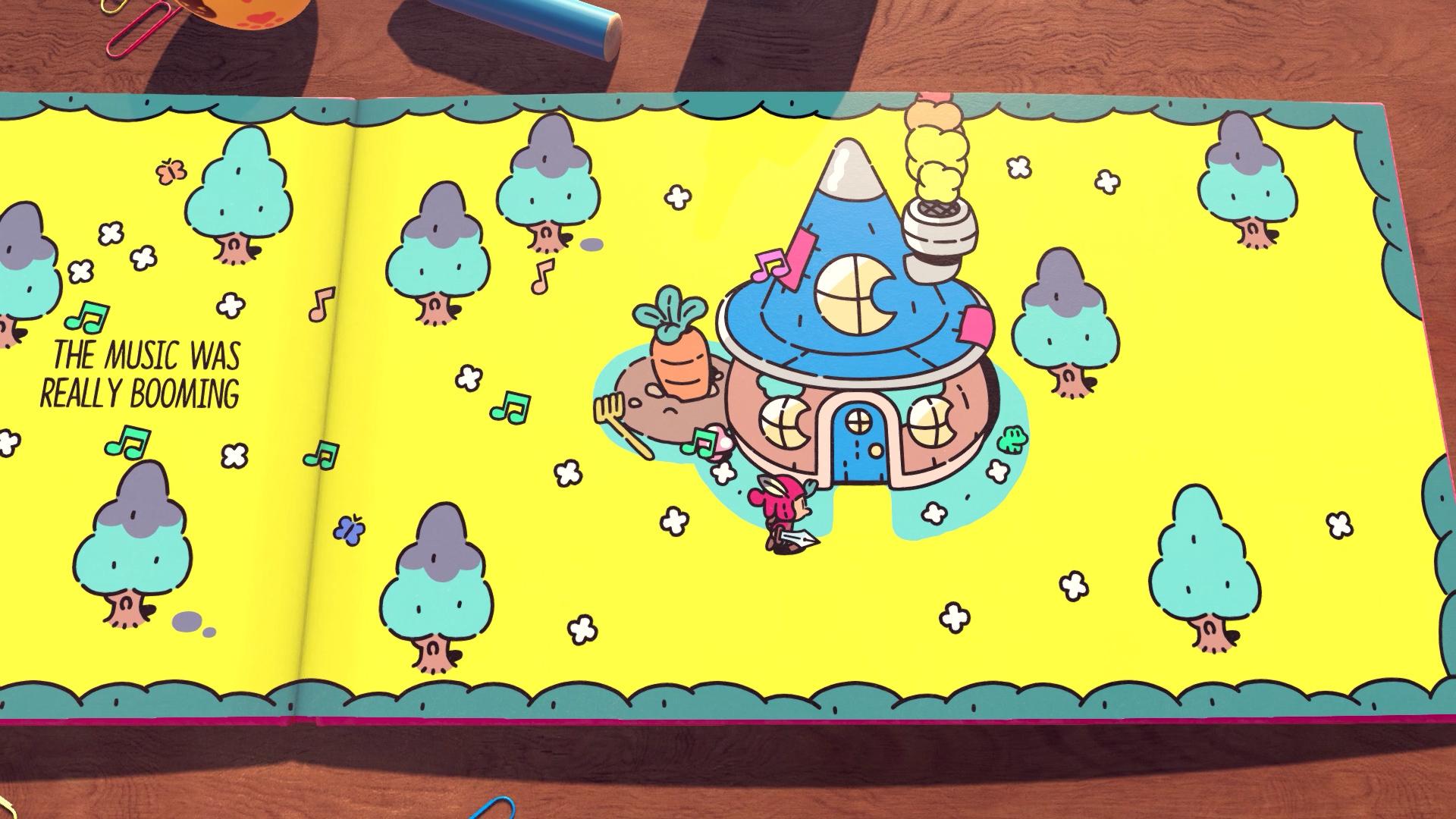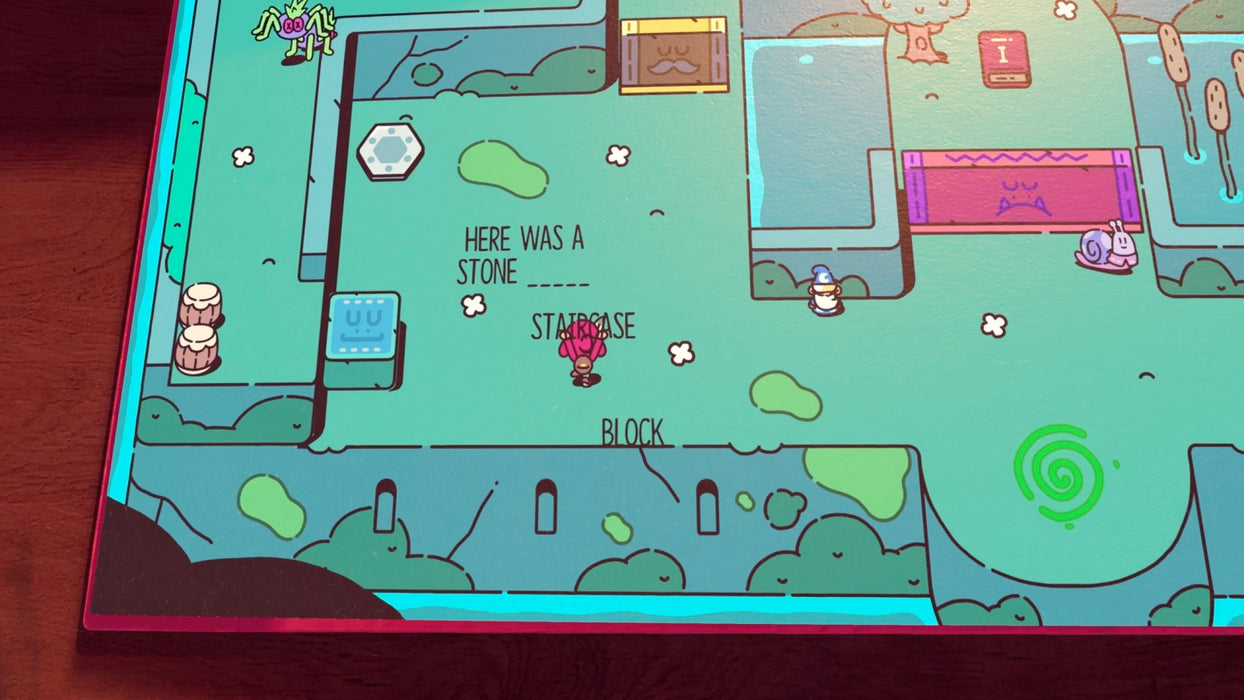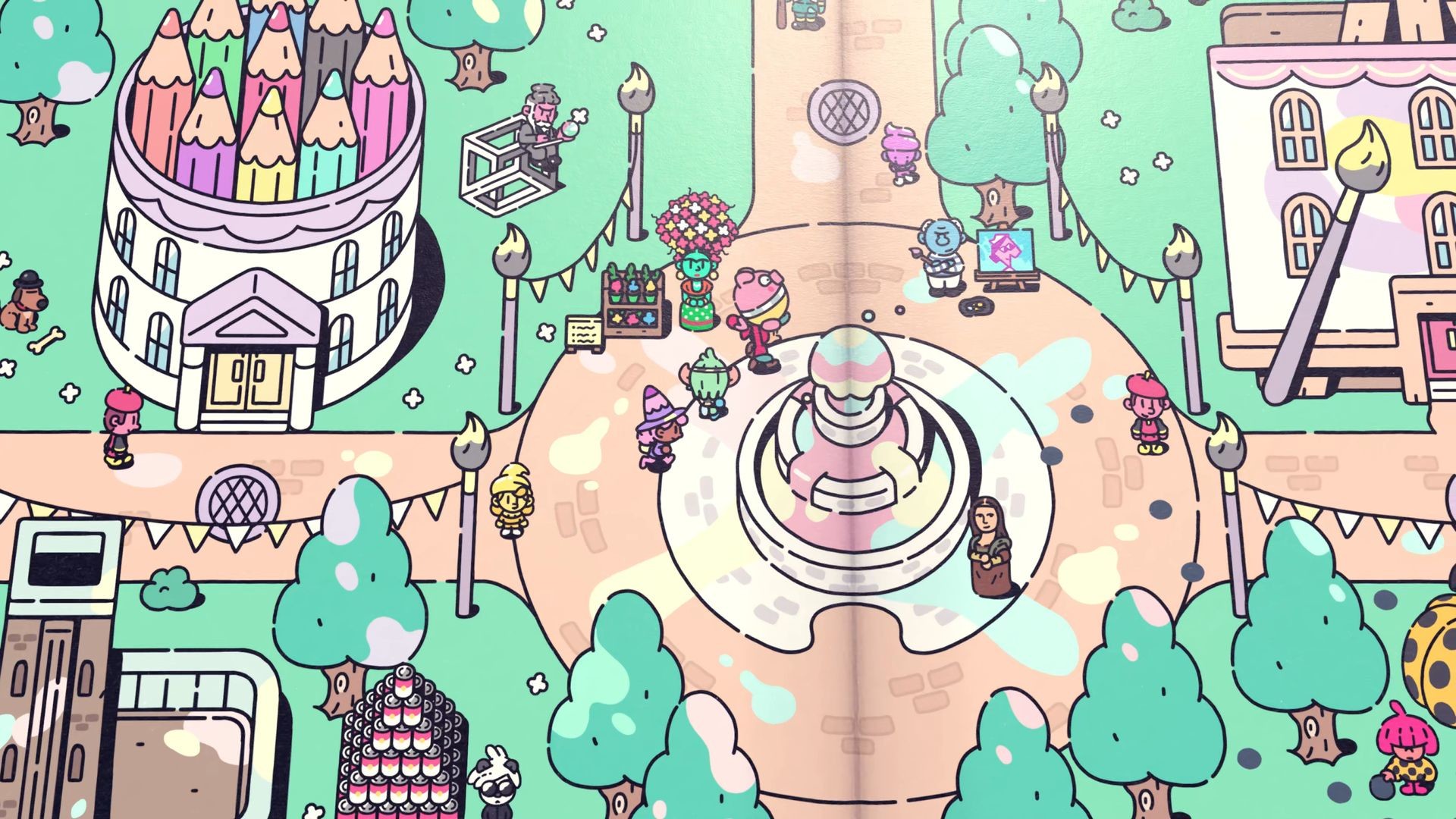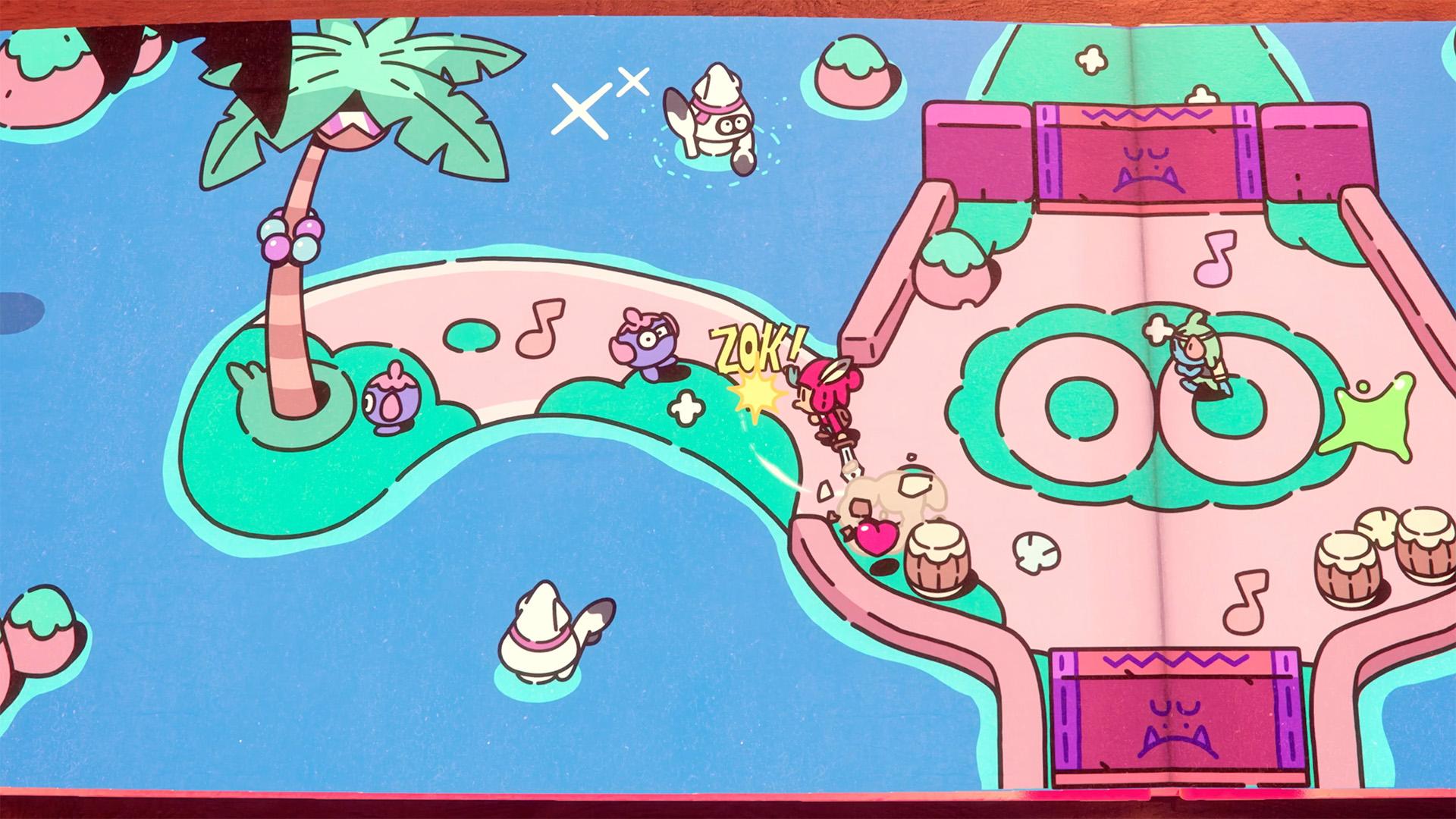When The Plucky Squire was first announced, it created quite a buzz. Not only did it look original, but its fantastically colourful (and wholly unique) presentation style stood out for great reason. As such, it quickly became one of the more anticipated games, for others and for myself.
When I was provided with a review code for the game, I couldn’t wait to play it, and downloaded it as soon as I could. Then, I spent a good portion of an afternoon with it. Afterwards, I was left both amazed and wondering if something was up with me.
While The Plucky Squire has a stunning, unique, standout and downright beautiful art style, it’s not as fun to play as I’d hoped.
Let’s rewind to the start, though. It’s important to introduce this game.
Developed by All Possible Futures, and published by Devolver Digital, The Plucky Squire is a game that begins inside of a storybook. It mixes two-dimensional gameplay with three-dimensional mechanics, the latter of which kick in when you leave the book and explore the child’s desk that surrounds it. At that point, it turns into a bit of a platformer, as you must navigate the things that are collected on said desk.

This is the story of Jot: the hero of this storybook-based world, Mojo, in which he foils the plans of the evil sorcerer, Humgrump. Afterwards, Jot — who wields a sword that looks like a pen — writes novels about his adventures.
When Humgrump realizes that he’s doomed to always be a villain stuck inside a storybook, he attempts to escape. In the process, Jot finds that he’s able to leave the book and explore the area around it. He also discovers other abilities, like being able to tilt the book so that things slide, freezing objects, dropping bombs or going back to previous pages in order to get specific words.
While he’s inside of the book, our hero must adventure in 2D form, in a style of gameplay that is reminiscent of older Zelda games. He has a sword, which can be used to attack enemies and hit foliage that reveals lightbulbs (currency). Further abilities can be unlocked, including a spin attack and the option of throwing your sword. You can even upgrade these.

You see, The Plucky Squire is an absolutely stunning game, but it holds your hand far too much and doesn’t have a lot of combat until near the end. You can get these abilities and upgrade them, but won’t have a lot of opportunities to use them until later on. It’s also not overly challenging, though it’s possibly because it was made with a younger audience in mind.
A lot of the game requires you to solve puzzles, which is not my favourite thing, unless they happen to be word searches. This involves tilting pages, and moving words in and out of sentences, in order to change things in your environment. For instance, you can change one page from night to day and back again, turn a block into a staircase, or transform a boulder into cheese. You’ll need to do this quite a bit, in order to progress through the book.
The game does introduce some interesting variety, like a bow that shoots arrows you aim using a reticule, and bosses that evoke games of yesteryear. However, it doesn’t have enough of the 2D, Zelda-like, gameplay we were looking forward to.
The truth also is that The Plucky Squire stops and starts constantly. It has a wizard you can talk to for tips, but still decides to pause regularly, in order to tell you what to do, or show you where to go. This really kills the flow of the game.

It can also be buggy. I experienced a number of bugs during my 9 hours with it.
While I didn’t experience any of the game breaking bugs I’ve read about, I did have to quit out more than once. That’s because it basically froze on me as I was trying to tilt a page. I became unable to do anything, and had to load my save anew.
One nice thing about this title, though, is that it actually has a save history. As such, you can go back and load previous saves from within the same file. More games need this.
Presentation wise, though, The Plucky Squire is one of the most impressive games I’ve ever played. It’s stunning, original and creative. The storybook pages look incredible, and pop with colour. On top of that, the black pages — which represent darkness and can be illuminated — have a realistic shine to them that makes them feel like real storybook pages.

This is, without a doubt, one of the best-looking games I’ve ever played, although it doesn’t look nearly as good during the 3D segments.
The sound is also good, but it’s lacking in some music and has some odd design choices. There is a good amount of text, and I really liked how you talked to the bow wielding huntress by using the text on her Magic the Gathering-inspired card. The voice acting is also quite good, although it’s used sparingly, for the narrator, a friendly wizard and Humgrump.
Unfortunately, what could have been great is merely solid. While The Plucky Squire is a creatively gorgeous game, its gameplay isn’t as fun or charming as its art style. It doesn’t trust its players nearly enough, and over-explains almost everything. Hell, it even pans out to show you where to go when you’re in 3D.
In the end, The Plucky Squire is a pretty good game that could’ve been great had it had more substance. If you decide to pick it up, or download it from PlayStation Plus, stick with it because it gets better as it goes along. Things pick up during the latter half.
This review is based on the PlayStation 5 version of the game, which we were provided with.

